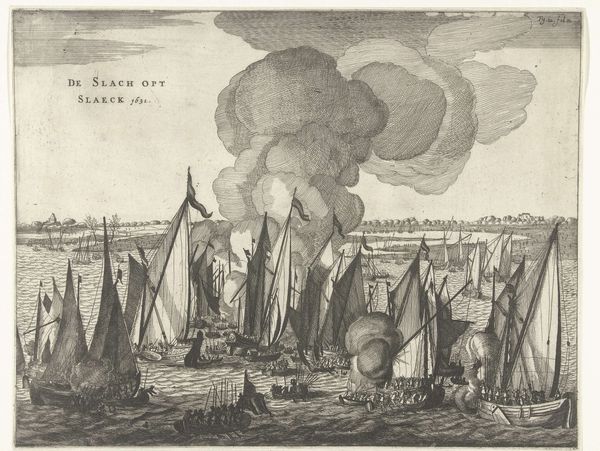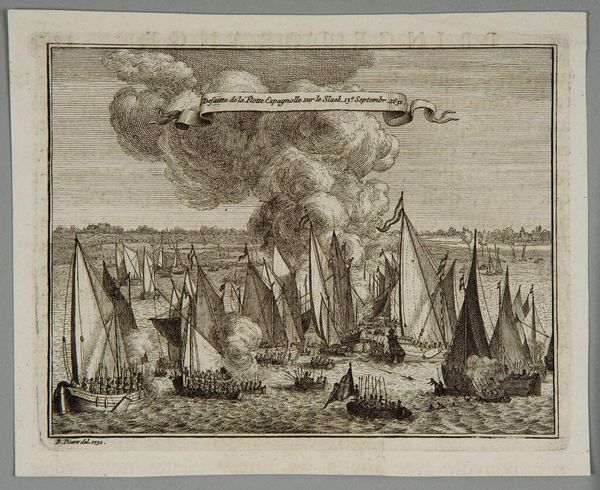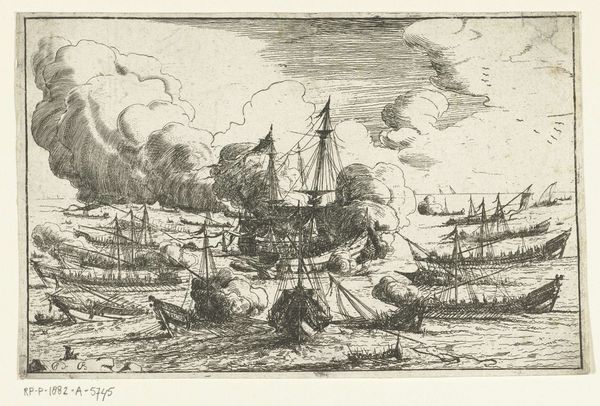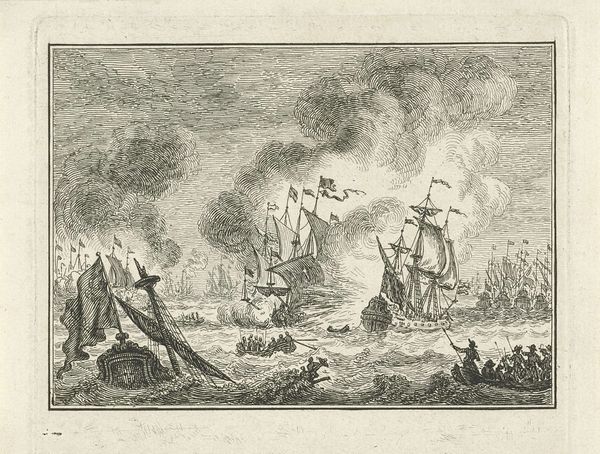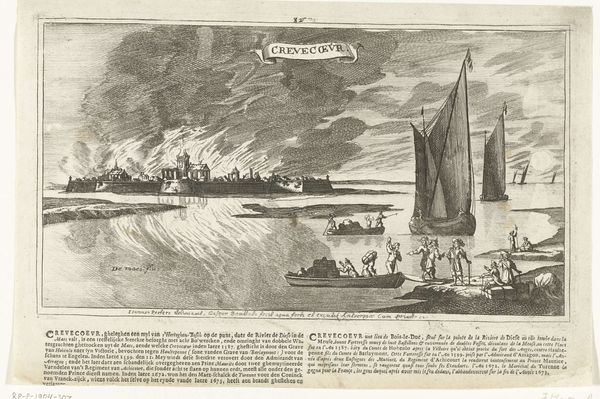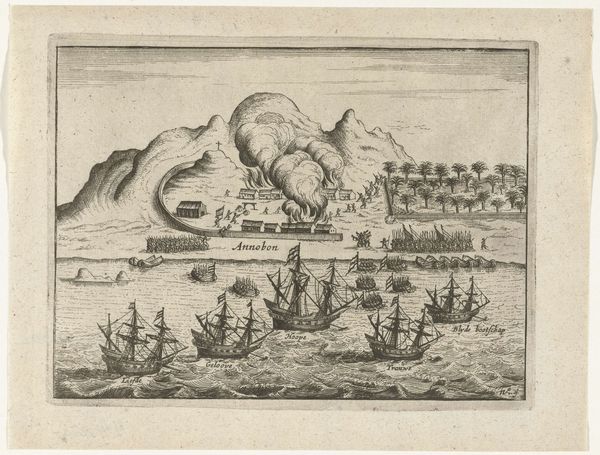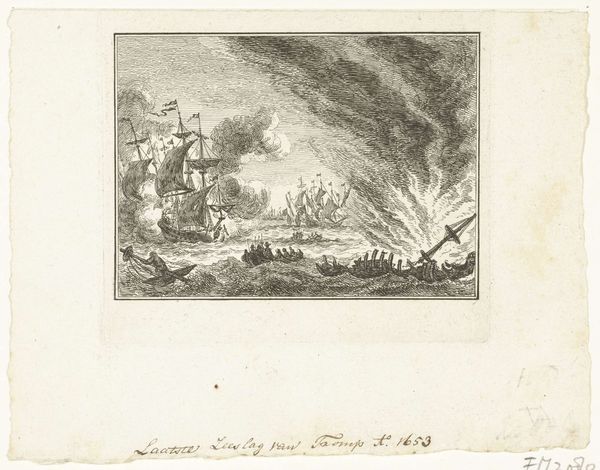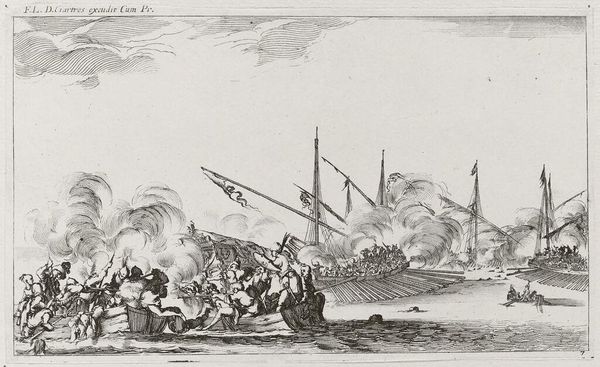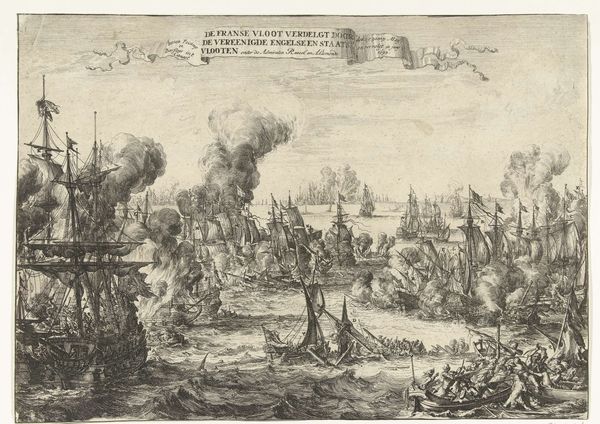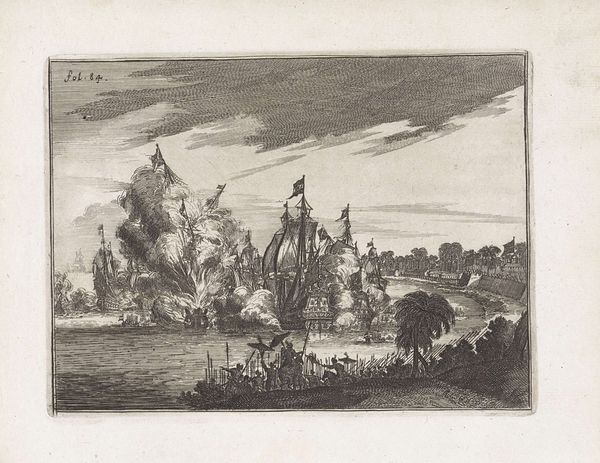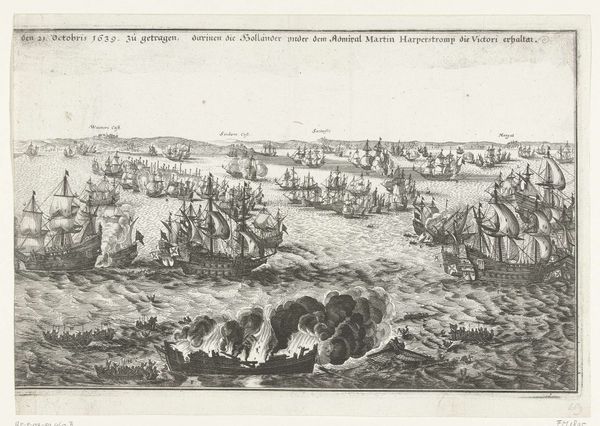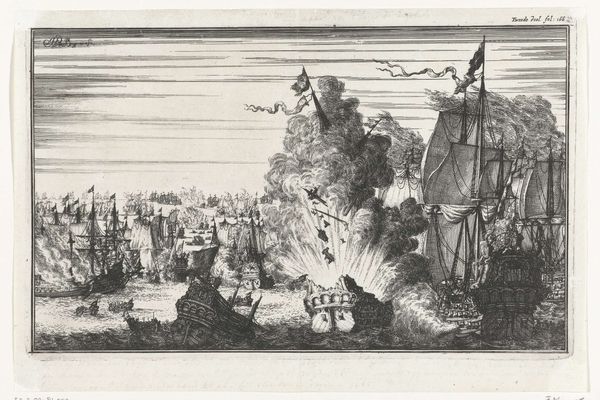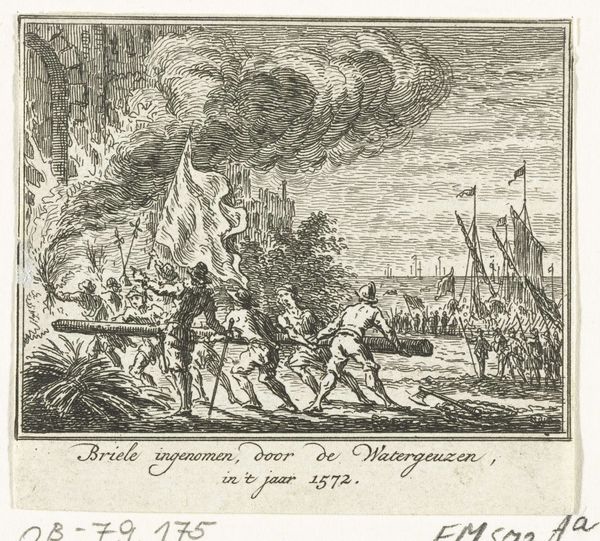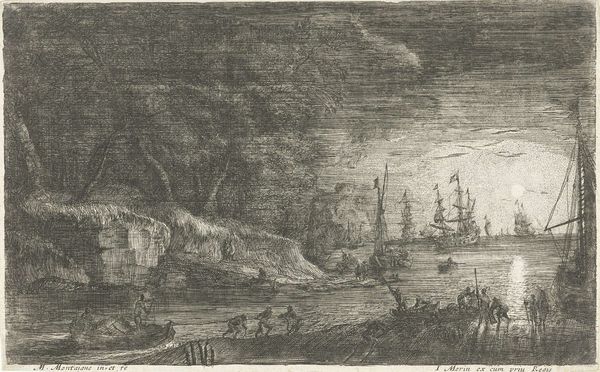
print, etching, engraving
#
narrative-art
#
baroque
# print
#
etching
#
landscape
#
figuration
#
line
#
cityscape
#
genre-painting
#
history-painting
#
engraving
#
realism
Dimensions: height 107 mm, width 136 mm
Copyright: Rijks Museum: Open Domain
Editor: This etching and engraving is entitled “Slag op het Slaak, 1631”, or “Battle on the Slaak”, made in 1732. I am immediately struck by the intricate linework and the dynamic composition. There’s a palpable sense of chaotic energy, even in monochrome. How do you interpret this piece through its formal qualities? Curator: The dynamic arrangement is certainly a critical point of entry. Notice how the artist uses contrasting lines, dark versus light, to create a sense of depth and movement. Consider the meticulous depiction of the ships, their sails creating sharp angles against the softer, billowing smoke. Does the tension generated by this contrast suggest something to you? Editor: I suppose it adds to the drama. It's like the hard-edged ships are pushing back against the formless smoke, implying the struggle of battle. It is quite theatrical, fitting with Baroque sensibilities. What’s interesting, though, is that despite the apparent detail, the figures are rather undifferentiated. Curator: Precisely. The individual figures are subsumed within the larger compositional structure. They contribute to the overall texture and rhythm rather than functioning as distinct individuals. This echoes Baroque artistic principles, prioritizing grand gestures and spectacle over intimate portrayals. Notice how this contrasts with, say, the Renaissance focus on the individual human form. Are you starting to see how the form and the supposed content are linked? Editor: Absolutely! The artist prioritizes the overall visual impact – the battle itself, and this overwhelming scene – rather than any particular person in the fray. It's not just a depiction of the event, but a Baroque interpretation of conflict through line, texture and shape. Curator: Exactly. Form truly dictates content.
Comments
No comments
Be the first to comment and join the conversation on the ultimate creative platform.
